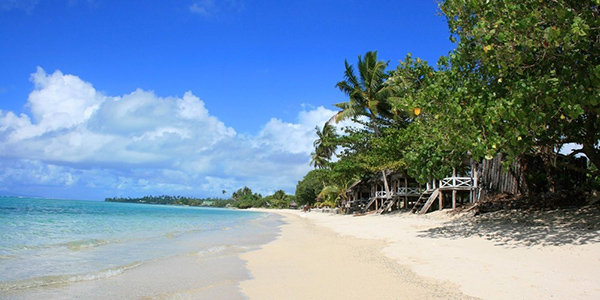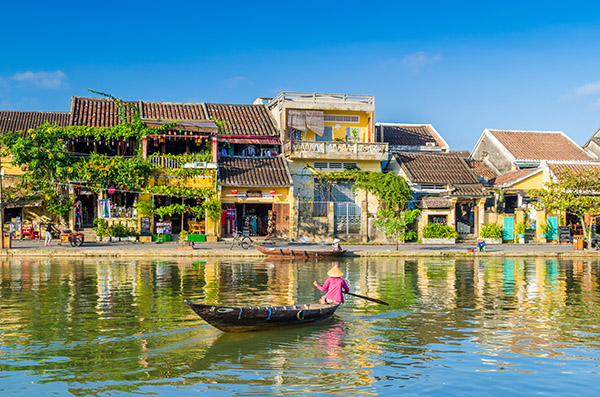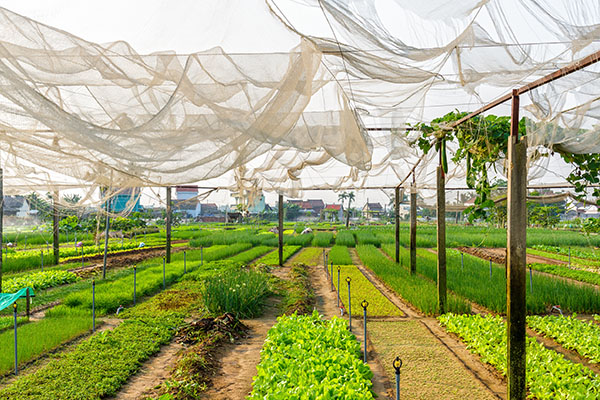Rustic and elegant, that's what you feel about Hoi An, an ancient town in the middle of Vietnam. The sun seems to shine in Hoi An all year round except for the stormy season usually starting from October and making an end in December. Used to be the most bustling port in Southeast Asia, Hoi An still preserves its heyday in quaint cobblestone streets embracing small yellow houses selling gorgeous handicrafts. That's why it was acclaimed as a World UNESCO Site. On the full moon day, local people will hold the floating lantern festival on Thu Bon River, which creates an enchanting moment from candlelight. Also, Hoi An is famous for excellent cuisine culture with an array of dishes such as Mi Quang, Banh mi.
Weather
The weather in Hoi An has two distinct seasons each year, the rainy season lasts from August to December and the dry season lasts from January to July every year. The average temperature in 20 - 21 degrees, there is no significant difference between months throughout the year. The average rainfall is 2,000 - 2,500 mm but unevenly distributed. Heavy downpours concentrate in September to December. It is the typhoon season in Central Vietnam.
How To Get There
Hoi An is located in Quang Nam, but the nearest airport is in Danang. This ancient town is 30 km from Danang, so you can travel by plane to Danang International Airport then take a bus or a taxi to Hoi An.
Highlights
 Japanese Bridge
Japanese Bridge
Japanese Bridge is the jewel in the heart of Hoi An. The bridge was built in the late 16th century. In the middle of the bridge is a small temple to worship Huyen Thien Dai De. The bridge has a unique roof with decorative structures and patterns showing a harmonious combination between Vietnamese, Chinese, Japanese, and Western architectural styles.
 An Bang Beach
An Bang Beach
Famous for the peaceful beauty, An Bang has reached the top 25 most beautiful beaches of TripAdvisor. Therefore, it features a wide selection of secluded resorts and hotels.
 Cu Lao Cham
Cu Lao Cham
Gathering 8 large and small islands, Cu Lao Cham is an ideal stop for travelers who love the pristine seascape, diving to admire the colorful coral reefs. Also, Cu Lao Cham has historical sites such as ancient Cham wells or Hai Tang ancient pagodas, which are more than enough to satisfy all tourists' exploring spirits.
 Ancient Town With Antique Houses
Ancient Town With Antique Houses
Hoi An ancient town covers entirely Minh An Ward, an area of about two km², with short and narrow roads, winding sections, running across each other like a chessboard. This area is characterized by two-floor houses painted yellow with mossy tiled roofs.
Tra Que Vegetable Village:
For those who fancy ecotourism, don't forget to check out Tra Que Vegetable Village. Only a few kilometers from the center of the old town, you will transfer to a lush vegetable garden, all grown organically. Here you can try the life of a farmer by growing some vegetables and picking up fruits.
Culture
Hoi An Ancient Town is a famous city in Quang Nam province. It is kept almost intact with more than 1,000 architectural monuments from streets, houses, meeting halls, temples, shrines, ethnic churches, ancient wells to traditional dishes, the souls of the people. A visit to Hoi An will captivate visitors by the timeless beauty, extremely rustic and idyllic. In addition to this, Hoi An is famous for traditional architecture, the harmony of houses, walls, and roads.
Best Time To Visit
The best time to travel to Hoi An is from February to April every year, it rains less and has a pleasant climate. Avoid going in summer because of the high temperature, scorching. The rainy season from October to November also has the disadvantage of wet space due to heavy and heavy rain. If you come to Hoi An on the 14th day every month according to the Lunar Calendar, you can catch the full moon festival. On this occasion, you will see the red lanterns spread across the street. Local people also let go of floating lanterns on Thu Bon river, creating an enchanting atmosphere.


